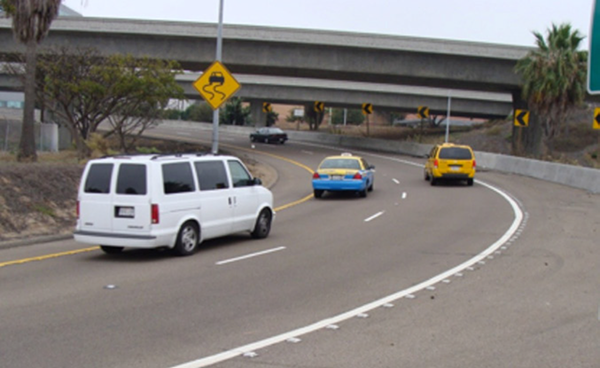Original publication: Every Day Counts Project Case Study: High Friction Surface Treatments – California Department of Transportation (PDF, 615kB)
Key Accomplishments
Caltrans Roadway Departure Safety Plan in 2011 identified 179 locations and approximately 50 other locations where High Friction Surface Treatment (HFST) has been or will be placed.
California has placed 10 HFST applications to date. However, 50 additional applications are planned, including one at a high-speed, signalized intersection. The majority of the applications will be for the end of on-ramps and on the curves of two-lane roadways.

Caltrans is moving forward with the projects as a result of information obtained from other states and information provided during webinars. Based on the information from webinars, Caltrans' specifications call for calcined bauxite only. Previously, Caltrans mainly used open-grade asphalt concrete (OGAC) to reduce wet pavement collisions along with grinding and grooving. However, OGAC could not be installed at locations where there were freezing temperatures. An additional benefit of HFST when compared with OGAC is the ability to install on any pavement surface without concern for cross drainage.
Results
The I-105 Sepulveda Blvd. on-ramp, a primary egress point from the Los Angeles Airport, was notoriously closed during rain events to prevent expected crashes. The average daily traffic is 31,000. Crashes occurred as a result of the tight curvature, the low friction, and aggressive driving by motorists. The closure of this highly utilized ramp resulted in numerous complaints to Caltrans. The latest five years of crash data showed that 68 of the 85 crashes were wet pavement crashes. Since Caltrans applied HFST to about 1,300 linear feet of the ramp, it has not been closed. The pre- and post-application friction values were 32 and approximately 60, respectively. Due to the volumes of crash data processed, post-application crash experience data is not available at this time.
Contact
Robert Peterson
Branch Chief, Caltrans
Highway Safety Improvement Program
Robert.Peterson@dot.ca.gov
Joseph Cheung
P.E., HFST Lead
FHWA Office of Safety
Joseph.Cheung@dot.gov
